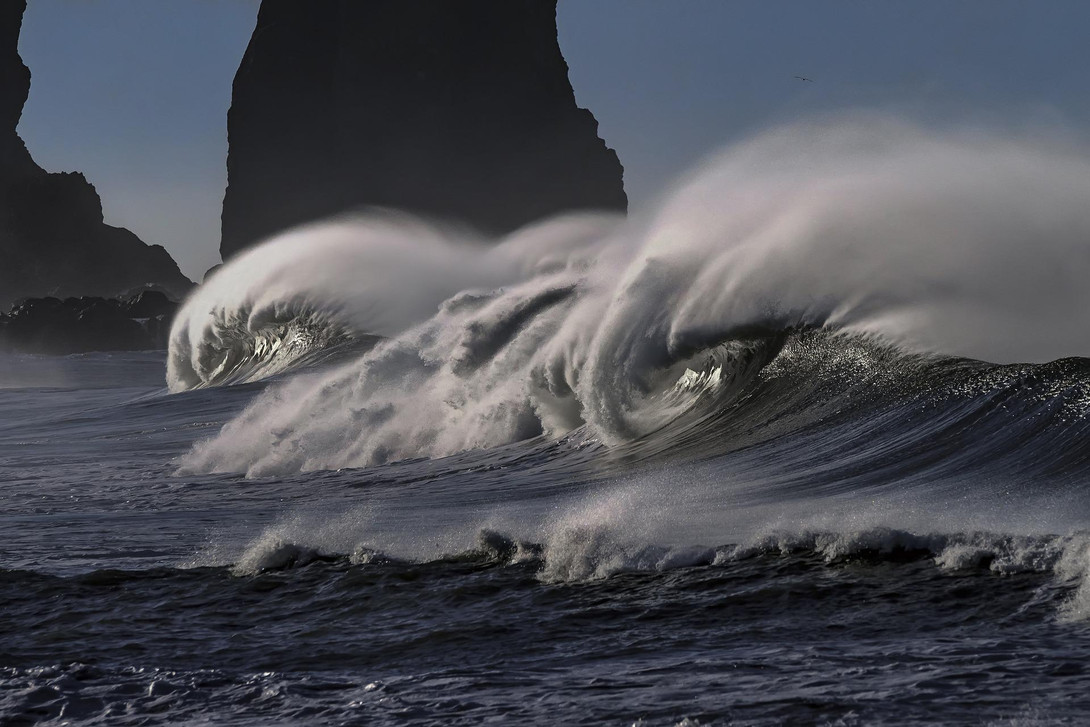Beaufort Scale
Your weather station may measure wind speed, and if it does it will tell you quite precisely how fast the wind is blowing in km/h or knots or whatever your favourite measure is.. But how fast is that? What does that feel like?
Originating in 1805 the Beaufort scale puts a description to a speed, starting with calm, through breezes to gales and up to hurricanes by way of a number between 0 and 12.
Whilst 40km/h may sound pretty strong, it measures up as 6 on the Beaufort scale - large branches will move, but you may still be able to use your umbrella. Here is a table of what it feels like:
| Beaufort number | Description | Wind speed | Wave height | Sea conditions | Land conditions |
| 0 | Calm |
< 1 knot
< 2 km/h |
0 m | Sea like a mirror | Smoke rises vertically. |
| 1 | Light air |
1–3 knots
2–5 km/h |
0-0.3m | Ripples with appearance of scales are formed, without foam crests | Direction shown by smoke drift but not by wind vanes. |
| 2 | Light breeze |
4–6 knots
6–11 km/h |
0.3–0.6 m | Small wavelets still short but more pronounced; crests have a glassy appearance but do not break | Wind felt on face; leaves rustle; wind vane moved by wind. |
| 3 | Gentle breeze |
7–10 knots
12–19 km/h |
0.6–1.2 m | Large wavelets; crests begin to break; foam of glassy appearance; perhaps scattered white horses | Leaves and small twigs in constant motion; light flags extended. |
| 4 | Moderate breeze |
11–16 knots
20–28 km/h |
1–2 m | Small waves becoming longer; fairly frequent white horses | Raises dust and loose paper; small branches moved. |
| 5 | Fresh breeze |
17–21 knots
29–38 km/h |
2–3 m | Moderate waves taking a more pronounced long form; many white horses are formed; chance of some spray | Small trees in leaf begin to sway; crested wavelets form on inland waters. |
| 6 | Strong breeze |
22–27 knots
39–49 km/h |
3–4 m | Large waves begin to form; the white foam crests are more extensive everywhere; probably some spray | Large branches in motion; whistling heard in telegraph wires; umbrellas used with difficulty. |
| 7 |
High wind,
moderate gale, near gale |
28–33 knots
50–61 km/h |
4–5.5 m | Sea heaps up and white foam from breaking waves begins to be blown in streaks along the direction of the wind; spindrift begins to be seen | Whole trees in motion; inconvenience felt when walking against the wind. |
| 8 |
Gale,
fresh gale |
34–40 knots
62–74 km/h |
5.5–7.5 m | Moderately high waves of greater length; edges of crests break into spindrift; foam is blown in well-marked streaks along the direction of the wind | Twigs break off trees; generally impedes progress. |
| 9 | Strong/severe gale |
41–47 knots
5–88 km/h |
7–10 m | High waves; dense streaks of foam along the direction of the wind; sea begins to roll; spray affects visibility | Slight structural damage (chimney pots and slates removed). |
| 10 |
Storm,
whole gale |
48–55 knots
89–102 km/h |
9–12.5 m | Very high waves with long overhanging crests; resulting foam in great patches is blown in dense white streaks along the direction of the wind; on the whole the surface of the sea takes on a white appearance; rolling of the sea becomes heavy; visibility affected | Seldom experienced inland; trees uprooted; considerable structural damage. |
| 11 | Violent storm |
56–63 knots
103–117 km/h |
11.5–16 m | Exceptionally high waves; small- and medium-sized ships might be for a long time lost to view behind the waves; sea is covered with long white patches of foam; everywhere the edges of the wave crests are blown into foam; visibility affected | Very rarely experienced; accompanied by widespread damage. |
| 12 | Hurricane force |
≥ 64 knots
≥ 117km/h |
≥ 16m | The air is filled with foam and spray; sea is completely white with driving spray; visibility very seriously affected | Devastation. |

